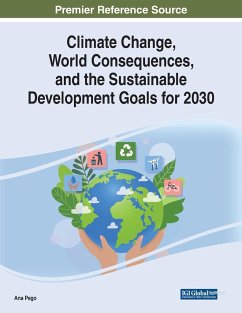
Goals and Economic Instruments for the Achievement of Global Warming Mitigation in Europe
Versandkostenfrei!
Versandfertig in 6-10 Tagen
61,99 €
inkl. MwSt.

PAYBACK Punkte
31 °P sammeln!
This book intends to bridge the gap between knowledge about global warming and practical implementation in the political process of the necessary measures for the reduction of greenhouse gas (GHG) emissions. It therefore deals with climatology, economics and political science in five sections: The state of scientific knowledge of climate change, the influencing factors, the man-made effects and the monitoring of GHG sources and sinks. The transformation of scientific results into politically achievable aims, the criteria for the allocation of the reduction goals, and the GHG inventories of Eur...
This book intends to bridge the gap between knowledge about global warming and practical implementation in the political process of the necessary measures for the reduction of greenhouse gas (GHG) emissions. It therefore deals with climatology, economics and political science in five sections: The state of scientific knowledge of climate change, the influencing factors, the man-made effects and the monitoring of GHG sources and sinks. The transformation of scientific results into politically achievable aims, the criteria for the allocation of the reduction goals, and the GHG inventories of European countries. The relevant political and economical instruments, such as voluntary approaches, the carbon/energy-tax and Activities Implemented Jointly (AIJ) and their working principles. The instrument of tradeable emission permits (the US Acid Rain Programme as an example) and possible designs of a system for CO2 on the national and international level. Comparison and summaries of the efficacy, the cost-efficiency, the achievability and political acceptability of the different instruments.














